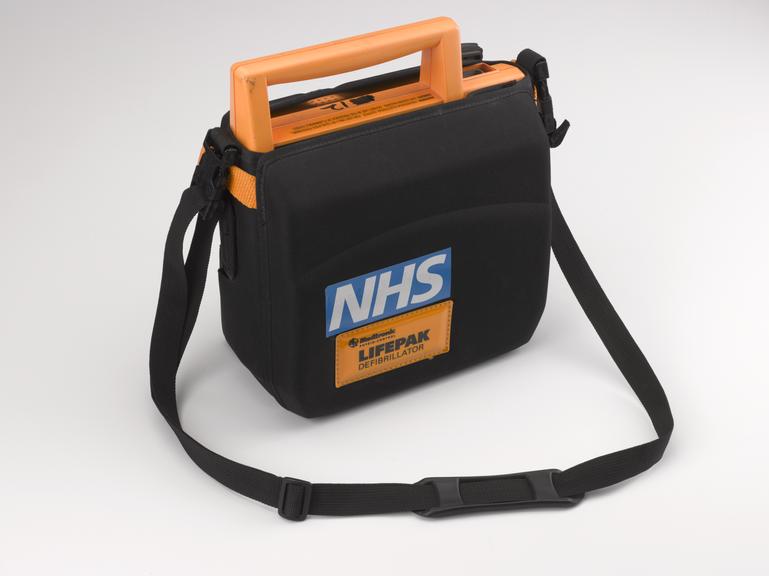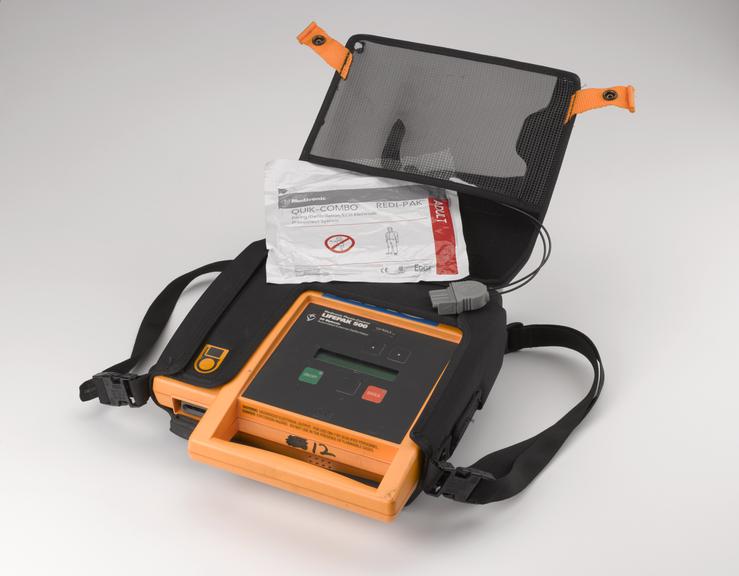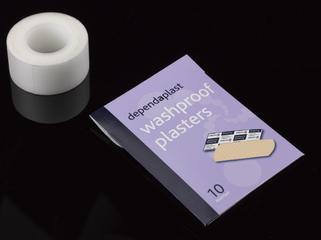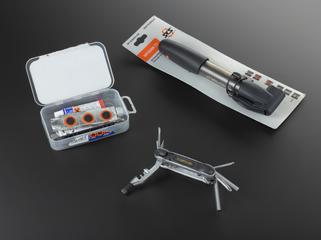NHS issue portable defibrillator
NHS issue portable defibrillator. Square, yellow in colour, and with a square handle at the top of the defibrillator. The number '12' written in black ink at the top. Part of medical equipment and tools supplied to members of the London’s Ambulance Cycle Response Unit.
More
Emergency responders on two wheels are a familiar sight in many cities, particularly during large scale events. Yet the UK’s first ambulance Cycle Response Unit (CRU) was established relatively recently. The idea was the brainchild of Emergency Medical Technician and former BMX racing champion Tom Lynch MBE, who knew he could reach people faster by bike on London’s gridlocked streets. In 1999 the NHS agreed to trial the service, and Tom made the most of his bicycle industry contacts to source the right equipment for the job. From the bike itself to the tyres, racks, panniers, uniform, and BMX helmet, each was selected and customised by Tom to ensure he could safely carry all the life-saving equipment transported by an ambulance. With everything on board – including a portable defibrillator, oxygen, entonox (commonly known as gas and air), monitors, drugs and a first aid kit – the unit weighed nearly 27kg.
Tom said, “I knew the day the trial became a success. I was based around the West End and the calls were coming in and I was doing my best to ease the pressure on the ambulance crews. I would race to incidents, flying past traffic, cycling where motor vehicles could not go and getting to patients quickly. That particular day I went to five incidents within one hour. I treated the patients, cancelled the ambulances and used other medical centres as opposed to the accident and emergency."
Over a six-month period, he was able to save more than 250 hours of ambulance availability. Today the London Ambulance Service’s 40 pedalling paramedics attend nearly 17,000 calls a year, resolving more than half of these at the scene.
- Materials:
- metal (unknown) , plastic (unidentified) and silicon
- Object Number:
- 2016-371/1
- type:
- defibrillator
- Image ©
- The Board of Trustees of the Science Museum










